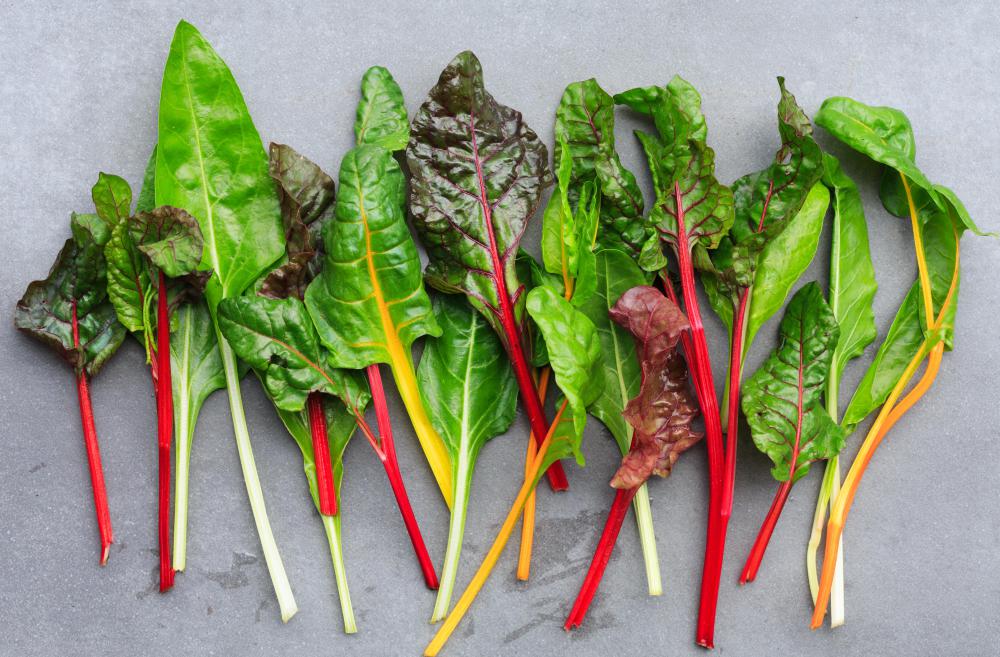At DelightedCooking, we're committed to delivering accurate, trustworthy information. Our expert-authored content is rigorously fact-checked and sourced from credible authorities. Discover how we uphold the highest standards in providing you with reliable knowledge.
What is Chard?
Chard is a relative of beets, and the leaves of the two plants look very similar. This plant, however, has been bred to have highly nutritious and flavorful leaves at the expense of the root, which is not edible. The most common type under cultivation is Swiss chard, which has brilliant green leaves and bright white or colored stalks. It is also related to spinach and has a slightly bitter, salty flavor popular among some consumers.
In appearance, chard is a cluster of slightly ruffled fan-like leaves with rich color saturation and bright stems. Many gardeners prize this plant for its ornamental as well as edible qualities. The leaves and stalks are edible, and like many leafy green vegetables, they are rich in a dazzling array of minerals. Chard has high levels of magnesium, calcium, vitamin K, iron, potassium, vitamin A, folate, zinc, copper, vitamin C, dietary fiber, and vitamin E. In addition to brightening up your day, a delicious serving can improve your health.

Young chard can be eaten raw, although its slightly bitter flavor may be off putting. Usually, the leaves is cooked before being eaten, and the stems trimmed. It can be steamed, roasted, grilled, or sauteed and is excellent on its own or as a dressing for pasta and other grains. It is used in a variety of cuisines and prized for its astringent flavor. Chard is a valuable dietary supplement for vegans and vegetarians, who should always eat plenty green leafy vegetables.
Chard is very popular in Mediterranean cuisine, appearing on pizza, in risotto, and as a plain side dish. The highly nutritious leaves can be mixed in with most Mediterranean dishes, including soups, to add texture and flavor.

To grow chard, space plants 4 to 6 inches (10 to 15 centimeters) apart in loose, well drained soil. If the soil is heavy or clay like, break it up with compost before planting. This plant enjoys cooler weather and sunlight, although it will tolerate frost and can be grown through the winter in mild climates. Chard should be kept moist, but not waterlogged, when young. Plant it approximately two weeks before the last spring frost, along with beets, for the best quality greens. Unless you are planting in an extremely cold region, the seeds can technically be planted year round for continuous harvest.

To harvest chard, simply cut the leaves off at the base as they mature. Older leaves should be trimmed and discarded so that the plant doesn't waste energy supplying nutrients to them. Younger leaves in the core can be left on until they are older or the gardener is ready to eat them. When harvested properly, chard can yield a second set of leaves from the same root. The leaves can be stored under refrigeration for up to two weeks, as long as it is not stored near fruits containing ethylene gas, such as apples and pears, which will hasten ripening and decay.
AS FEATURED ON:
AS FEATURED ON:















Discussion Comments
where can I buy chard in Melbourne Australia?
Chard has lots of fiber, carotenes and calcium. When buying chard look for firm stalks and vibrant leaves.
Post your comments